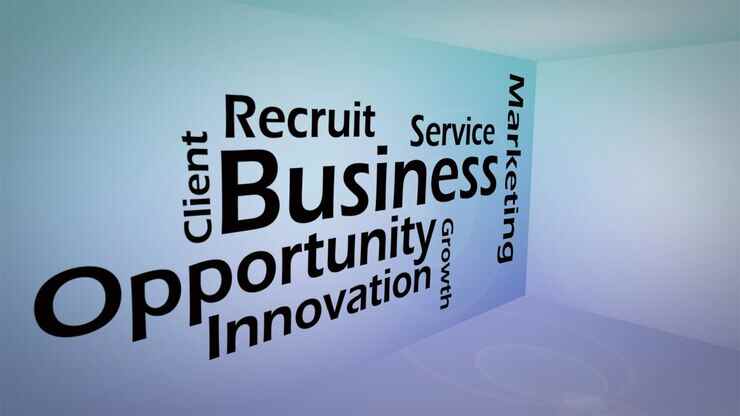Purpose
I’m encouraging you to think about which of the shifts going on in the world will impact your business now and or into the future and decide what to act one.
Introduction
In part one we summarised ten shifts facing business today – If you’ve come directly to this article you may wish to read part I first. If you want to dive straight here are the ten in bullet point:
1. Increasing speed, strengthening resilience
2. ‘True hybrid’: The new balance of in-person and remote work
3. Making way for applied AI
4. New rules of attraction, retention, and attrition
5. Closing the capability chasm
6. Walking the talent tightrope
7. Leadership that is self-aware and inspiring
8. Making meaningful progress on diversity, equity, and inclusion
9. Mental health: Investing in a portfolio of interventions.
10. Efficiency reloaded.
What are the right responses to these shifts? How can leaders and their teams change? Where do they start?
More importantly what do they mean for you and what actions can you start taking?
In this article we look at each of the ten areas and give you some questions to ask and actions to consider for your business.
Questions to ask and Actions to consider for your business:
1) How can you increase speed & strengthen resilience?
How can you adopt a fully agile operating model? Leaner teams with the ability to focus on what really matters. SME owners you’ll already have lean operating advantages over some of your larger corporate competitors.
Can your team members be dynamic and flexible to do different roles when required?

How are you equipping your leaders, managers and team with the necessary skills and responsibilities. Remember to operate quickly teams need to be empowered.
Resilience – here I believe you are looking at the business/brand and the resolve of the individuals and systems that run it. Can they all stand the pace of change? For the individuals how do you proactively prepare them to cope?
“It’s important to find and promote adaptable leaders who don’t just react when faced with, say, a natural disaster, a competitor’s moves, or a change in team dynamics. They take the time to coach team members through the change. They catalyse new behaviours, and they develop capabilities that can help set the conditions for both a short-term response and long-term resilience.
2) How do you embrace ‘True hybrid’ and turn it into your competitive advantage?

Attracting and retaining staff is more important than ever and I believe as the report suggests that true hybrid organisations can distinguish themselves as destination workplaces. Couple this with a growing work anywhere mentality – then the winners will be those who enable and empower and as a result will be able to harness the best talent. Clearly not all industries are created equally, Hospitality is largely dependent on in person working. To such industries I’d ask, what more do you need to do to attract the right people? Where could you enable flexibility?
“True-hybrid organizations create policies, workflows, and documentation that help employees understand which activities are best done in person and whether those activities are best carried out in real time or asynchronously (that is, with all team members being online when it’s most convenient for them rather than simultaneously)”
For true hybrid effectiveness people will need to adjust. How are you equipping your leaders and managers with the mental and emotional skills to lead remote teams. Communication is a obvious physical barrier, you are likely to need to enhance within your teams for them to be even more effective.
Tips:
• Be clear on performance expectations, focus on results & output.
• Set clear rules and guidelines on behaviours and where people work.
• Test, learn and adapt.
3) How do we make way for applied AI?
Most people I speak to about AI fall into one of two camps – they are excited by it, or they completely dread it. (Sometimes both). How do you feel about it? Whatever you feel, it is here and will be embraced by those that choose to learn, adapt, and change. There is competitive advantage to be gained, will you lead the change? Follow the change or get left behind?

Ask yourself where could AI make a difference? Even if you don’t have all the answers, still ask the questions then find someone who can help.
“Embedding AI in corporate culture – AI-first organizations are focused on building a perpetual-learning culture and teaching AI to the whole workforce. That’s the only sure-fire way to drive widespread acceptance of AI. The organizations that report the highest returns from AI are nearly three times more likely than others to report using a variety of capability-building programs (such as experiential learning, self- directed online courses, and certification programs) to develop technical employees.7 They are also nearly twice as likely as others to offer programs for nontechnical employees.”
4) What do we need to do differently to attract and retain top talent?
“Gone are the days when simply focusing on compensation, job title, and financial security was enough to keep most of a workforce satisfied.”
First is simply to meet the changing needs of the workforce and design jobs and environments that meet expectations on work–life balance, professional development, or purpose.
Your people remain a great source of competitive advantage – They run the systems that look after your customers that generate the profits.
The report suggest that companies can gain competitive edge with a dual focus on people and performance – challenging, nurturing and collaborating. What are you doing to empower your teams and leaders to succeed in a motivating and rewarding way? Being human and developing human (soft) skills I think is key here in combination with applied tech as per the AI point above.
5) If the skills needed to create value are changing, how must we adapt?
There are a couple of skills gaps – one is the obvious lack of skill on the market who have the necessary skills in certain functional areas e.g., A.I. The other less obvious, but potentially key is the abilities we’ve already touched on across the business to make quick decisions, think creatively, communicate and all the other important soft skills. (I hate the term but use it as you know what I mean – I’d should say critical human skills, that compliment a world in which AI plays its part).
Have your team all the technical and soft skills you’ll need them to have to propel you quickly into the future?
The report briefly introduced the ‘VECTOR’ model, to help guide finding the right formula:
• Vision for what want to be known for & Leadership committed to the journey.
• Employees talent system to support the vision.
• Culture and Mindshift to embrace change and make it stick.
• Technology – utilising tech and data in a way which scales
• Organisation – Structure and ways of working to give clarity on roles, responsibilities, and accountabilities.
• Routines – Practices to embed new processes into the business.
6) How do we get the balance right between short-term protection and long-term success?
This is not new, just even harder in today’s climate. Getting really clear on which roles create the most value within the business is key. Then aligning the best/right people to those most important positions. N.B. It’s always good to look with a future lens on this and the position that generates the most profit today, could change in the future and you may want to direct your talent accordingly.

7) Creating Leadership that is self-aware and inspiring?
“Organizations can only be as resilient as their leaders, who need to lead themselves as well as their teams.”
“For today’s leaders, the essential task comes in three layers: they need to be able to lead themselves, they need to be able to lead a team of peers in the C-suite, and they need to be able to exhibit the leadership skills and mindset required to lead at scale, coordinating and inspiring networks of teams and ensuring that their organization functions as a cohesive whole. That’s a big ask of any single human. For any leader, it requires building a keen awareness both of themselves and of the operating environments around them.”
How are you investing in yourself and your leadership team?
Most important elements of leadership culture (Taken from the report) – To rank yourself and or the team against:
• Role modelling
• Inspiring others
• Developing people
• Setting expectations
• Fostering team discussions
• Communicating in a convincing and charismatic way.
“For execution, organizations need to foster an environment in which teams are working on multiple initiatives in parallel—all with a mindset of discovery. The leader’s perspective here changes from that of a controller who operates through detailed analysis and planning to that of a coach who operates through short cycles of quick decision making, experimentation, and learning. Under this form of leadership, an organization can better respond to challenges and uncover opportunities. It can stop experiments that underperform and scale up those that are thriving.”
Join the NoLimits Business Community
Are you a business owner looking to take your business to the next level? Join our innovative community of like-minded professionals and gain access to a wealth of valuable resources, including a community portal to chat with other business owners, ebooks, business development software, and growth events that will transform the way you do business. Best of all, these resources are completely free and will be available to you forever.
But the benefits of joining our NoLimits business community don’t stop there. By becoming part of our community, you’ll have the opportunity to connect with other business owners, share insights and ideas, and build valuable relationships that will help your business thrive. Don’t miss out on this amazing opportunity to supercharge your business and join us today!
8) How to make meaningful progress on diversity, equity, and inclusion?
“McKinsey research shows that more than 70 percent of companies surveyed express transformative DEI aspirations, but less than half (47 percent) have the infrastructure in place to realise these aspirations.”
Have you the right infrastructure in place?
How well is your DEI linked to your strategy? What is the desired impact?
“Setting a DEI vision will require making an honest assessment of how diverse, equitable, and inclusive an organization is currently and how much further it needs to travel. A mix of DEI, HR, and business leaders should own this process. C-suite leaders, business unit managers, functional managers, and others across the organization will need to define the vision for DEI in the workplace and set clear aspirations and goals for achieving that vision. Leaders won’t be able to act on all DEI initiatives at once, so they should develop an action plan that prioritizes the programs based on ease of implementation and level of impact.”
9) Taking a front foot on Mental health?
“Organizations need to refocus their efforts on addressing the root causes of mental-health and well- being challenges in a systematic way; one-off and incremental fixes won’t be enough.”
How can we avoid overwhelm amongst staff and address cause not just the symptoms? This could be about training for the leaders and managers, not just stickly pasters to hand out to the employees. Take a critical look at your business and ask what you would like to improve. Point no fingers, simply work together on finding the right solutions together.

Examples you may wish to adopt:
• Resilience training & stress management.
• Programs to boost office community, connectivity, communications, and trust.
• Policies to reduce burnout.
• Peer to peer support programs
• Coaching and or counselling
10) Achieving next level Efficiency?
“Efficiency is back at the top of the company agenda, with a reinvigorated mandate to create more efficient organizations that place resources where they matter most.”
Is your business model still fit for purpose in today’s changing landscape? Are there ways to do things differently – faster and more efficiently?
How can you empower and train your team to make faster decisions better?
Conclusion
Fully addressing any one of these ten shifts can be a complex undertaking, in its own right. All ten together and it’s no wonder some leaders and overwhelmed! I shared them all here to prompt your awareness and thinking. I suggest select those that resonate with you as important for your business and focus accordingly.
By James Gentle
Join the NoLimits Business Community
Are you a business owner looking to take your business to the next level? Join our innovative community of like-minded professionals and gain access to a wealth of valuable resources, including a community portal to chat with other business owners, ebooks, business development software, and growth events that will transform the way you do business. Best of all, these resources are completely free and will be available to you forever.
But the benefits of joining our NoLimits business community don’t stop there. By becoming part of our community, you’ll have the opportunity to connect with other business owners, share insights and ideas, and build valuable relationships that will help your business thrive. Don’t miss out on this amazing opportunity to supercharge your business and join us today!

